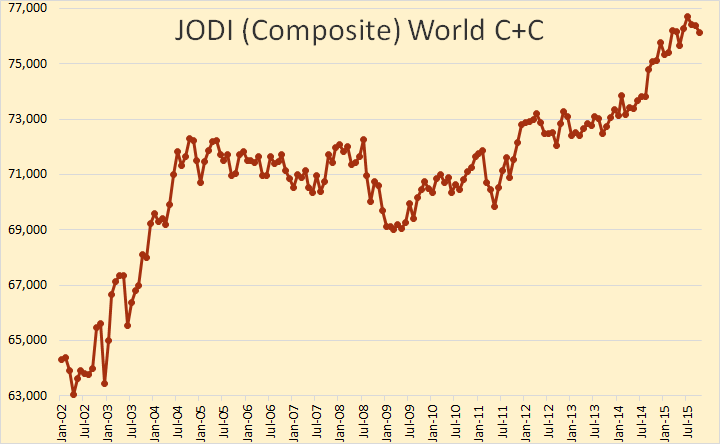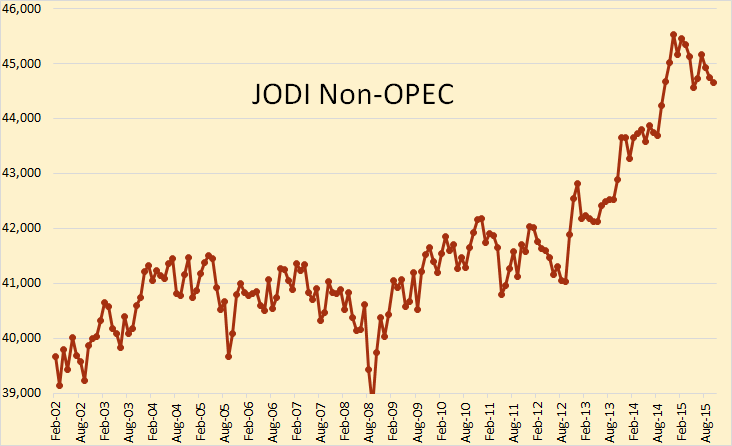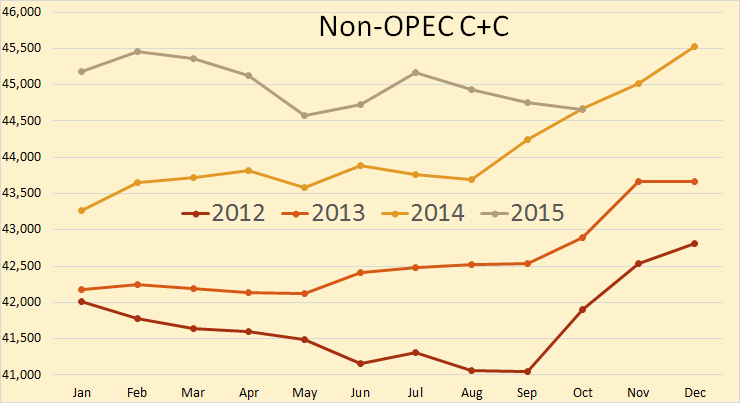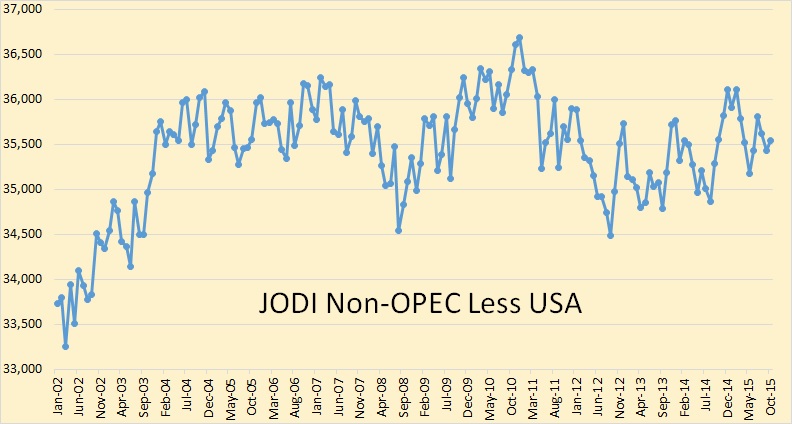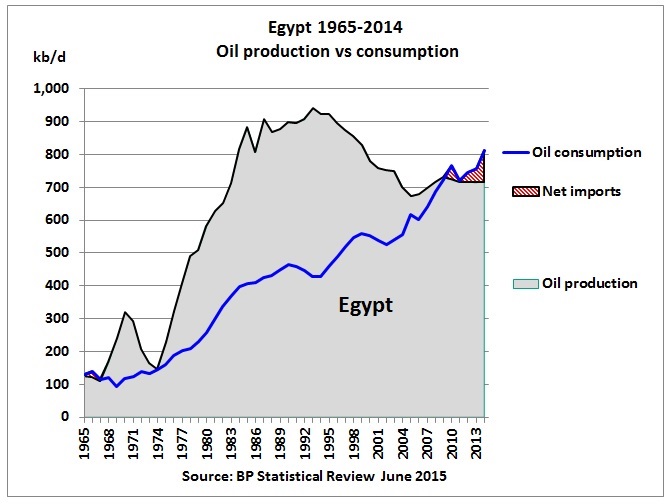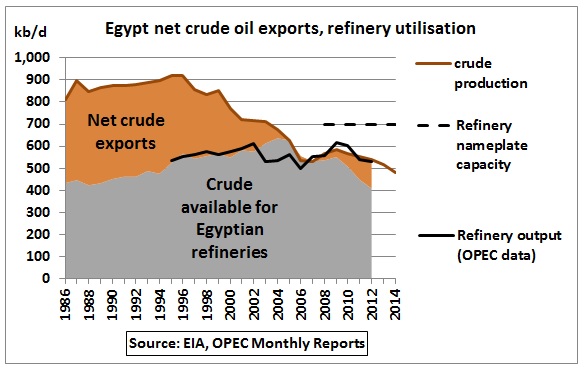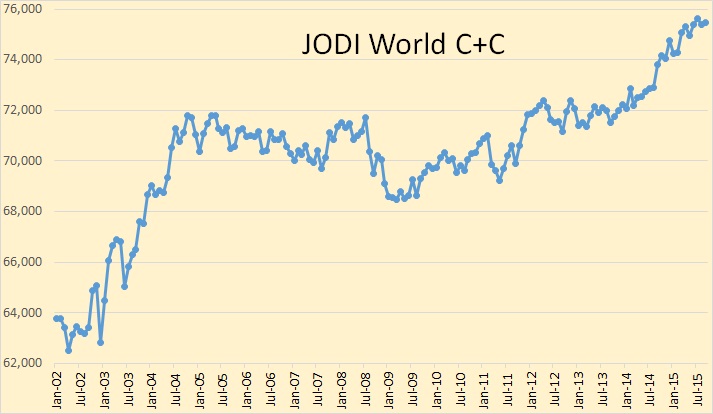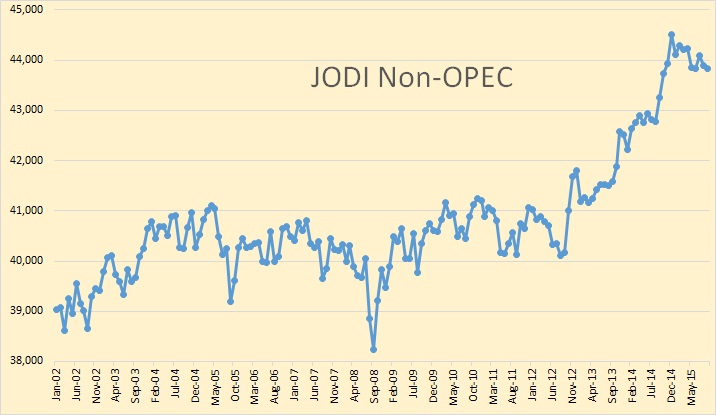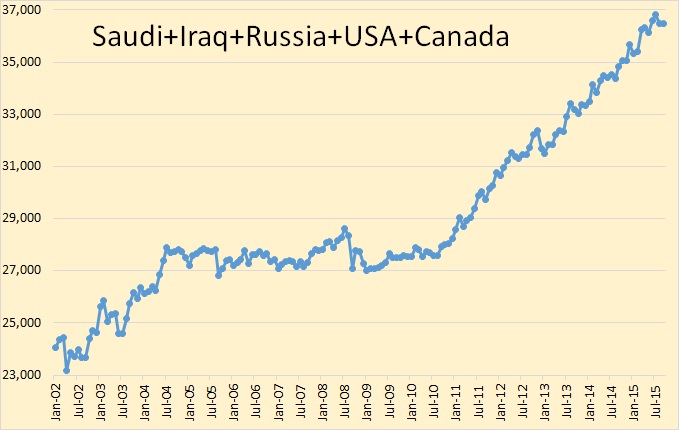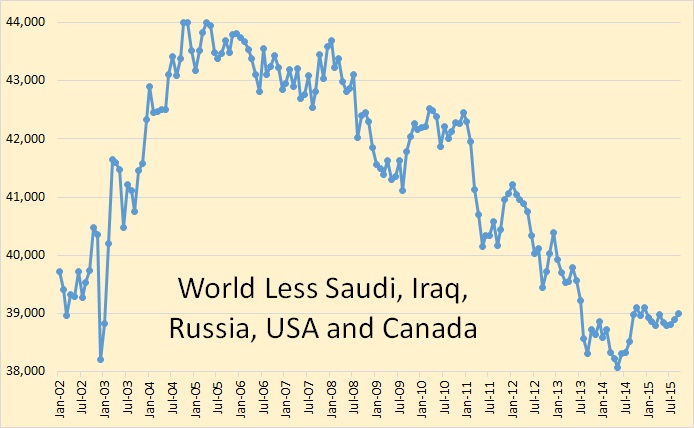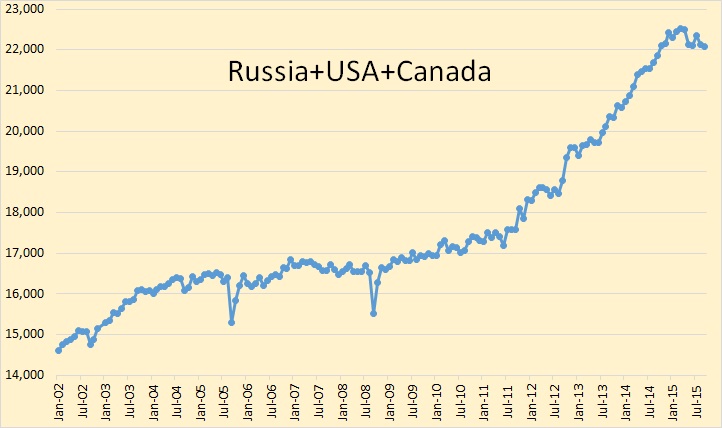I gave them this two-fold answer:
1. We are hitting something similar to “Peak Oil” right now. The symptoms are the opposite of the ones that most people expected. There is a glut of supply, and prices are far below the cost of production. Many commodities besides oil are affected; these include natural gas, coal, iron ore, many metals, and many types of food. Our concern should be that low prices will bring down production, quite possibly for many commodities simultaneously. Perhaps the problem should be called “Limits to Growth,” rather than “Peak Oil,” because it is a different type of problem than most people expected.
2. The only theoretical solution would be to create a huge supply of renewable energy that would work in today’s devices. It would need to be cheap to produce and be available in the immediate future. Electricity would need to be produced for no more than four cents per kWh, and liquid fuels would need to be produced for less than $20 per barrel of oil equivalent. The low cost would need to be the result of very sparing use of resources, rather than the result of government subsidies.
Of course, we have many other problems associated with a finite world, including rising population, water limits, and climate change. For this reason, even a huge supply of very cheap renewable energy would not be a permanent solution.
This is a link to the presentation: Energy Economics Outlook. I will not attempt to explain the slides in detail.
…click on the above link to read the rest of the article…


